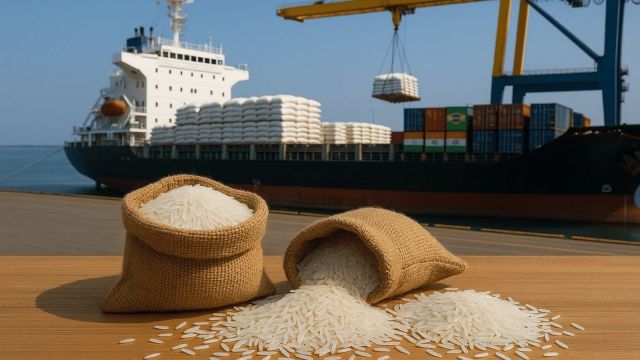‘Sweet aroma of new opportunities’: Basmati exporters eye Middle East, other markets amid US tariff challenge
If the US imposed high tariffs, it could make Indian Basmati uncompetitive in the market. The question is whether other countries can absorb the exports without lowering the prices, experts say.
 The US-bound Basmati could be redirected to West Asian countries like Saudi Arabia, Iran, Iraq, UAE, Yemen, and Oman. (Credit: Pixabay)
The US-bound Basmati could be redirected to West Asian countries like Saudi Arabia, Iran, Iraq, UAE, Yemen, and Oman. (Credit: Pixabay)With most of the over 60 lakh metric tonnes of Basmati exported from India coming from Punjab and Haryana, exporters are worried about the challenges posed by the latest US tariffs and how it would impact the industry.
After the newly announced 25 per cent additional tariff, India has now joined Brazil at the top of the list of countries facing the highest import taxes under President Donald Trump’s tariff regime. But what if the US tariffs make Indian Basmati uncompetitive? Can other markets absorb this quantity, and where is the demand strongest?
India is the world’s largest exporter of Basmati rice, known for its aroma and long grain. In the 2024–25 financial year, it shipped around 60.65 lakh metric tonnes (LMT) of Basmati worth Rs 50,312 crore (USD 5,944.49 million) to global markets, with the US accounting for nearly 6 per cent of these exports, worth Rs 2,849 crore, according to the Agricultural and Processed Food Products Export Development Authority (APEDA).
According to APEDA, Punjab and Haryana produce around 80 per cent of the country’s Basmati, with the former ranking number one. The Basmati grown here also comes under the GI tag, which also leads to high demand abroad.
‘Loss of American market need not spell disaster’
In the 2024–25 financial year (April–March), India exported around 3.61 LMT of Basmati to the US. Experts said that while recent developments indicate a setback for the country’s Basmati exporters after Washington slapped a steep tariff on imports, the US actually accounts for a modest share of India’s total aromatic rice trade.
“With strong demand elsewhere, experts say the loss of the American market need not spell disaster—if exporters move swiftly to tap alternative buyers,” said an exporter.
The US-bound Basmati could be redirected to West Asian countries like Saudi Arabia, Iran, Iraq, UAE, Yemen, and Oman. The region is already the largest buyer, purchasing around 70 per cent of the exports, with Saudi Arabia, Iran, and Iraq accounting for around 50 per cent of the Basmati exports in 2024–25. By maintaining stricter quality standards, Europe and the UK can also consume some quantities, given the presence of a strong diaspora there. Demand in the domestic Indian market during weddings, festivals, and for luxury consumption is also increasing.
“No doubt the Middle East, which has both the appetite and cultural preference for Indian Basmati, has a huge demand for it. Saudi Arabia alone imported over 11 LMT in 2024-25, so an additional 3–4 LMT across the Middle East region is feasible. But sudden high tariffs by the US require some preparation, and it may hit Basmati exports a bit in the beginning,” said a source with the APEDA.
“Gradually, however, Indian Basmati will find a new place, and US-bound Basmati could be exported to other countries. In 2023–24, India was exporting Basmati to 150 countries, which increased to 154 countries in 2024–25,” the source said, adding that the surplus Basmati can be absorbed, though prices would likely fall to some extent initially, but not for long.
‘Actual impact will be smaller’
“Even if the US market is lost due to high tariffs, it will help in adaptability and in creating new markets,” said a member of the All India Rice Exporters Association (AIREA), adding that since America accounts for only 6 per cent of the total exports, the impact is smaller in scale than people might assume.
“Suddenly losing the US market might be a blow in the current scenario, but India’s Basmati story does not end there. For exporters willing to diversify and adapt, the sweet aroma of new opportunities is already waiting for them in various countries,” said another exporter.
Director of the Punjab Rice Millers and Exporters Association, Ashok Sethi, said US tariffs on Basmati will certainly hit prices because India exports 3–4 lakh tonnes of Basmati to the nation and for this to be consumed by already existing markets, would mean that prices would slip lower. “Moreover, the Basmati cultivation season is already over in Punjab, and this year around 6.83 lakh hectares are under the crop. Exporters will have to assess the market before purchasing from farmers,” he said.
- 01
- 02
- 03
- 04
- 05































